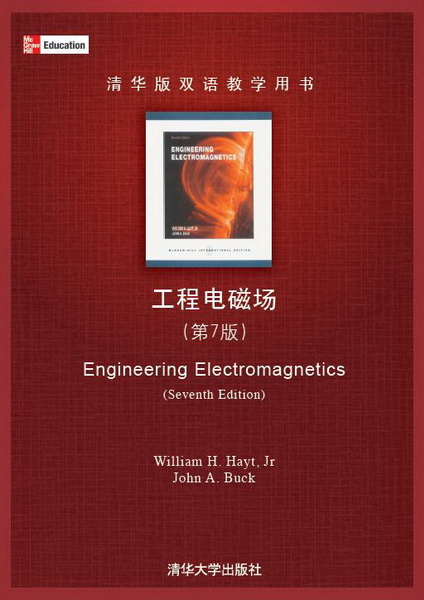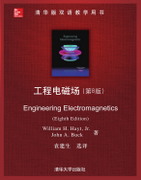





定价:79元
印次:1-4
ISBN:9787302359364
出版日期:2014.07.01
印刷日期:2019.02.13
图书责编:盛东亮
图书分类:教材
作者William H.Hayt,Jr.教授曾任教于美国普渡大学,其一生获得诸多荣誉,堪称教学名师之典范。请读者在学习该教材之前,一定要阅读作者简介,相信这一定会激发你对William H.Hayt,Jr.教授的敬仰和对电磁场学习的兴趣。作者J. A. Buck为乔治亚理工学院电气与计算机工程系教授。两位作者合编的该书的第6版于2001年出版,William,H.Hayt,Jr.的第1版距今已50多年。 本教材与国内电子与电气工程专业的本科教材基本一致,其内容满足我国高校教学大纲要求。该书基本概念讲述清晰、注重物理概念、淡化公式推导、图文并茂、定理和重要公式彩色加重印刷; 每章后面都配有约30道习题。该书写作文笔流畅、可读性好、易理解,学生可以使用该教材进行自主学习,是电磁场或电磁场与波课程的理想教材或参考书。 需要特别指出的是: 该书配有学习网站(网址见封底),网站提供了丰富的学习资源和内容,包括图、动画、互动、小测验等,书中页边处给出了网站上对应内容的图标,每当学到图标处时,建议查阅网站相应内容,这对学习非常有益。另外,每章后面的习题采用三级难度分类标识给出每道题的难易程度(题号后的竖条),便于不同学习程度的学生选择习题。 相对于国内相应教材,该书在内容上包含一些工程使用性内容,如不规则形状电极间的电容近似计算方法、PN结电容、磁路概念、铁磁材料的非线性等内容。该书在内容上的另一特点是简略一些公式推导,加强物理概念讲述,新版本更加如此。例如,新版本删除了求解拉普拉斯方程和泊松方程的分离变量法和差分法等内容,因为此为数学方法,并非物理概念。删除的这些内容放到了网站上供扩展性学习。 该书在内容编排上有独到之处。例如,在静电场部分,将能量与电位的引入结合在一起(第4章的题目为能量和电位),突出了电位是电场对单位电荷做功的物理属性,而不是像国内教材强调电位梯度等于电场强度的数学关系; 在磁场部分,相对于静电场部分的5章编排,该部分仅以两章出现,一章的题目为“恒定磁场”,另一章的题目为“磁场力、材料和电感”,这种编排的综合性与静电场内容编排的分散性形成了明显的反差,且在讲解中多处是通过与静电场类比的形式直接给出结果或结论。 在内容讲解上比较简洁,如仅用了两页就介绍完了磁场能量与求磁场力的虚功法,并且概念和实用性很强,从该节题目上的“磁材料上的力”便可以清楚地表明,虚功法的主要用途是求作用在磁材料上的力,这是利用洛伦兹磁力的表达式求解所不及的。 该书在教学网站提供了教辅资源,包括动画、互动、测验等,并给出了一些利用Ansoft等电磁场数值计算软件得到的场图,以及一些问答测试题。
William H. Hayt, Jr. (deceased) received his B.S. and M.S. degrees at Purdue University and his Ph.D. from the University of Illinois. After spending four years in industry, Professor Hayt joined the faculty of Purdue University, where he served as professor and head of the School of Electrical Engineering, and as professor emeritus after retiring in 1986. Professor Hayt’s professional society memberships included Eta Kappa Nu, Tau Beta Pi, Sigma Xi, Sigma Delta Chi, Fellow of IEEE, ASEE, and NAEB. While at�Purdue, he received numerous teaching awards, including the university’s Best Teacher Award. He is also listed in Purdue’s Book of Great Teachers, a permanent wall display in the Purdue Memorial Union, dedicated on April 23, 1999. The book bears the names of the inaugural group of 225 faculty members, past and present, who have devoted their lives to excellence in teaching and scholarship. They were chosen by their students and their peers as Purdue’s finest educators.A native of Los Angeles, California, �ohn A. Buck received his M.S. and Ph.D. degrees in Electrical Engineering from the University of California at Berkeley in 1977 and 1982, and his B.S. in Engineering from UCLA in 1975. In 1982, he joined the faculty of the School of Electrical and Computer Engineering at Georgia Tech, where he has remained for the past 28 years. His research areas and publications have centered within the fields of ultrafast switching, nonlinear optics, and optical fiber communications. He is the author of the graduate text�Fundamentals of Optical Fibers (Wiley Interscience), which is now in its second edition. Awards include three institute teaching awards and the IEEE Third Millenium Medal. When not glued to his computer or confined to the lab, Dr. Buck enjoys music, hiking, and photography.�
About the authors William H_ Hayt, Jr. (deceased ) received his B.S. and M.S. degrees al Purdue Uni- versity and his Ph.D. from the University of Illinois. After spending four years in industry. Professor Hayt joined the faculty of Purdue Universicy. where he served as professor and head of the School of Electrical Engineering,and as professor emeritus after retiring in 1986. Professor Hayt's professional society memberships included Eta Kappa Nu. Tau Beta Pi. Sigma Xi, Sigma Delta Chi. Fellow of IEEE. ASEE. and NAEB. While at Purdue. he received numerous teaching awards. including the uni- versity's Best Teactler Award. He is also listed in Purdue's Book of Great Teachers. a p...
序 3
Chapter 1
Vector Analysis 2
I.I Scalars and Vectors 2
1.2 Vector Algebra 3
1.3 The Rectangular Coordinate System 4
1.4 Vector Components and Unit Vectors 6
1.5 The Vector Field {)
1.6 The Dot Product l0
1.7 The Cross Product 12
1.8 0ther Coordinate Systems: Circular
Cylindrical Coordinates 14
1.9 The Spherical Coordinate Sysiem l9
References 23
Chapter 1 Problems 23
Chapter 2
Coulomb's Law and Electric
Field Intensity 28
2.1 The Experimental Law of Coulomb 28
2.2 Electric Field Intensity 31
2.3 Field Arising from a Continuous Volume
Charge Distribution 35
2.4 Field of a Line Cha...
同系列产品
查看详情-
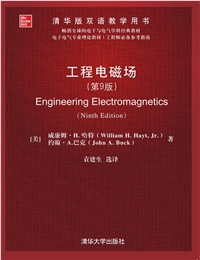
工程电磁场(第9版)
[美]威廉姆·H.哈特(William H. Hayt,Jr.) [美]约翰·A.巴克(John A. Buck) 著 袁建生选译
ISBN:9787302530275
定 价:109元
-
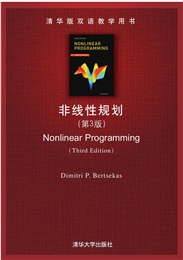
非线性规划(第3版)
Dimitri P. Bertsekas
ISBN:9787302482345
定 价:169元
-
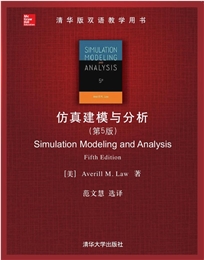
仿真建模与分析(第5版)
[美]Averill M.Law 著,范文慧 选译
ISBN:9787302473305
定 价:159元
-
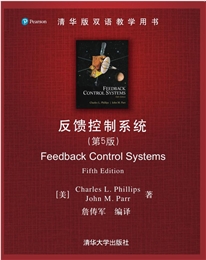
反馈控制系统(第5版)
[美] Charles L. Phillips [美]John Parr 著,詹俦军 编译
ISBN:9787302440017
定 价:98元



 电子书
电子书
 在线购买
在线购买
 分享
分享






